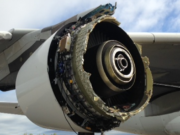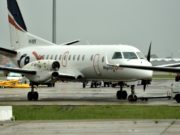The U.S. Federal Aviation Administration (FAA) is adopting a new airworthiness directive (AD) requiring initial and repetitive inspections of CFM56-7B engine fan blades in the wake of an in-flight blade failure last month that resulted in the death of a passenger on Southwest Airlines Flight 1380. The AD, which was published in the Federal Register on Wednesday and is effective May 14, 2018, aligns with CFM International service bulletins and actions by the European Aviation Safety Agency, FAA said.
The AD requires initial and repetitive inspections of the concave and convex sides of the fan blade dovetail, based on accumulated fan blade cycles, to detect cracking and replacement of any blades found cracked.
In response to the Southwest event, FAA issued an emergency AD (AD 2018-09-51) for certain high-time CFM56-7B engines, specifically including those with 30,000 or more accumulated flight cycles since new. The emergency AD required a one-time ultrasonic inspection of the convex and concave sides of the fan blade dovetail.
According to the AD, an initial ultrasonic or eddy current inspection of each CFM56-7B fan blade must be performed before the blade accumulates 20,000 cycles since new or within 113 days of the effective date of the AD, whichever occurs later. If the number of cycles since new is not known, an initial inspection must be performed within 113 days of the AD effective date. Thereafter, the inspection must be repeated every 3,000 cycles, which CFM estimates to be every 1.5 to two years of operation.
FAA estimates the AD will affect 3,716 engines installed on U.S.-registered airplanes.
Editor’s note: This article has been edited to reflect publication of the AD on May 2, 2018.

